Gyeryongsan National Park (계룡산국립공원)
12.5 Km 48858 2021-09-06
327-6, Donghaksa 1-ro, Gongju-si, Chungcheongnam-do
+82-42-825-3002
Gyeryongsan National Park stretches across the cities of Daejeon, Gongju, and Nonsan in Chungcheongnam-do and was made a national park on December 31, 1968. The name of the mountain comes from the fact that the ridgeline looks like a dragon wearing a chicken's crest on its head. The topographical features are what make this mountain stand out and its mysterious folklore is what makes it so interesting. The park features many peaks, including the main peak Cheonhwangbong (alt. 845.1 m), as well as Sambulbong, Yeoncheonbong, and Gwaneumbong Peaks. This mountain is famous for its many interesting sites, with its fantastic rock structures and Yongmunpokpo Falls on the west, Eunseonpokpo Falls to the east, and Amyongchu and Sutyongchupokpo Falls in the south.
In spring, cherry blossoms bloom along the path to Donghaksa Temple, and during summer the lush green of the valley is very beautiful. During fall, the maple trees reveal their crimson colored leaves around Gapsa Temple and Yongmunpokpo Falls. The snowcapped peak of Sambulbong in winter is simply breathtaking. Gyeryongsan is full of rare animals and plants, beautiful waterfalls and a rich history with mysterious legends and cultural treasures. To the east is Donghaksa Temple; northwest, Gapsa Temple; southwest, Sinwonsa Temple; and southeast, Yonghwasa Temple.
Byeolcheonji Sikdang (별천지식당)
12.5 Km 29268 2024-02-15
29 Sanseo-ro 1659beon-gil, Dong-gu, Daejeon
Byeolcheonji Sikdang is a Korean nutritious food restaurant renowned for its specialization in baeksuk (whole chicken soup). Their standout dish is oribaeksuk (whole duck soup), meticulously prepared with cordyceps and a blend of traditional medicinal herbs to enrich both its flavor and health benefits. Additionally, the restaurant is acclaimed for its baeksuk made with native chicken and galbi tang (galbi soup). Set next to a serene pond, Byeolcheonji Sikdang provides a peaceful atmosphere for guests to enjoy their meals.
Daecheongho Lake (대청호)
12.7 Km 23096 2022-12-26
Dong-gu, Daejeon / Munui-myeon, Chungcheongbuk-do
+82-42-251-4748
Daecheongho Lake is a man-made lake, stretching from Daejeon to Cheongju-si, Okcheon-gun, and Boeun-gun. Construction began in 1975 and finished in 1980, and the lake supplies water for various use to people in Daejeon and Cheongju.
The reservoir water spans an area of over 72.8 ㎢ with a perimeter of 80 kilometers, and the water kept in storage has a volume of 1.5 billion tons, making the reservoir the third largest lake in Korea. The area is famous for its beautiful driving course along a tree-lined road through the nearby mountain which has an altitude of 200 to 300 meters. Also, resident birds and migratory birds, such as white heron, can be seen during summer in the upper region of the lake.
Sikjangsan Cultural Park (Sunrise Observatory) (식장산 문화공원(해돋이전망대))
12.9 Km 35273 2023-02-09
32-834, Secheongongwon-ro, Dong-gu, Daejeon
Sikjangsan (623.6 meters) is a mountain spanning three regions - Dong-gu of Daejeon, Gunbuk-myeon and Gunseo-myeon of Okcheon-gun. As the tallest peak in the city located in the southeastern part of Dong-gu, Daejeon, it stands proudly next to great mountains in neighboring regions such as Seodaesan, the tallest peak in Chungcheongnam-do (904 meters), and Daeseongsan, the tallest in Okcheon (705 meters). Home of a 4.82 million-square-meter large, natural ecosystem preservation forest designated by the city, Sikjangsan is an ecological repository featuring plants of 224 species, 45 varieties, 187 genera, and 78 families; 45 kinds of mammals such as roe deer, squirrels, wildcats, raccoons and bats; over 100 types of birds; reptiles; and amphibians.
Sikjangsan Cultural Park is an ecological park that continues from Secheon Park to Sikjangsan Sunrise Observatory. The cultural park was established at the peak of the mountain, which had been regarded as one of the best nightscape viewpoints in Daejeon. A traditional tower built inside the cultural park adds a sense of classical dignity. An observatory from which the entire city can be seen in a single view is also located here. People of all ages and genders visit the tower and observatory to enjoy the expansive view of Daejeon.
Donghaksagyegok Valley (동학사계곡)
13.2 Km 35878 2024-02-28
327-6 Donghaksa 1-ro, Banpo-myeon, Gongju-si, Chungcheongnam-do
Donghaksagyegok Valley is a 3.5km-long valley located near Donghaksa Temple within Gyeryongsan National Park in Gongju-si. It is surrounded by lush green forests where wildflowers bloom, and the sound of clear water and birds can always be heard. The valley features attractions such as Donghaksa Temple, Eunseonpokpo Falls, and wild birds. While beautiful in all seasons, it is most stunning during spring when everything is in vibrant green.
Red Leaf Willow Habitat (왕버드나무군락지)
13.3 Km 0 2024-02-15
Miho-dong, Daedeok-gu, Daejeon
Red Leaf Willow Habitat is located near Daechung Dam and Geumgang Lohas Daecheong Park, along the Geumgang River. This area is ideal for photography, offering stunning views during sunrise and sunset, with sunlight and mist creating a picturesque scene. The decaying wood of the trees in the wetland area can even emit light on its own during the nighttime.
Gongju Donghaksa Temple (동학사(공주))
13.6 Km 33524 2020-03-16
462, Donghaksa 1-ro, Gongju-si, Chungcheongnam-do
+82-42-825-2570
Located in the east valley of Gyeryongsan Mountain in Hakbong-ri, Banpo-myeon, Gongju, Donghaksa Temple is the first and the oldest existing academic institute for female monks. Home to about 150 monks who study and practice Buddhism, the temple is the most visited spot on all of Gyerongsan Mountain due to its history, convenient location, and visitor facilities.
The elegant structure of the temple is x_heighted by the majestic view of Munpilbong Peak to its front. In the spring, many visitors come to the temple to see the cherry blossom tunnel, a 3 kilometer pathway from Bakjeongja three-way intersection to Donghaksa Temple. Every year since 1993 the temple has also been the venue of the Donghaksa Spring Flower Festival.
Dasom Chaban (다솜차반)
13.7 Km 2 2024-02-13
29 Gyebaek-ro 421beon-gil, Yuseong-gu, Daejeon
Dasom Chaban is a Korean table d'hote restaurant celebrated for its picturesque garden setting. The restaurant presents a range of meticulously crafted full-course meals, distinguished by their tidy presentation and ample portions. The standout dish is the geongang borigulbi jeongsik (barley-aged dried yellow croaker set menu), featuring an appetizer, assorted side dishes, and over ten different delicacies, with bori gulbi as the main course. Nestled on the outskirts of Daejeon, it offers an ideal retreat for a leisurely drive and a delightful dining experience.
Geumgang Pedestrian Bridge (금강보행교)
13.8 Km 0 2023-01-04
Sejong-ri, Sejong-si
+82-44-120
Geumgang Pedestrian Bridge, a new landmark of Sejong-si, opened in March 2022. First two-story bridge in Korea, the large scale bridge with circular design provide various areas for activities. The upper part of the bridge is for pedestrian with rest area and convenience facilities, where as the lower part is a bicycle only road for those wanting exercise and smooth riding.
Geumgang Recreational Forest (Arboretum, Forest Museum) (금강자연휴양림(금강수목원,산림박물관))
14.0 Km 76633 2021-04-29
110, Sallimbangmulgwan-gil, Sejong-si
+82-41-635-7400
Along the river from Gongju toward Daejeon there is Geumgang River to the right. Following this river, there is a red arch-shaped bridge on the right called Bultigyo Bridge. Geumgang Recreational Forest, a large and well-organized forest, is located on the other side of this bridge. In the past, this remote village can only be reached by boat. In 1994, the Chungnam Forest Environment Research Institute moved to this area and designated the well-preserved dense forest as Geumgang Recreational Forest, and the Forest Museum opened in October 1997. Geumgang Recreational Forest is different from other recreational forests. Rather than a dense forest with a trail, this forest has a variety of attractions such as the Forest Museum, an arboretum, greenhouse, pond, and wildlife park scattered on well-maintained roads, giving the impression of a city park.
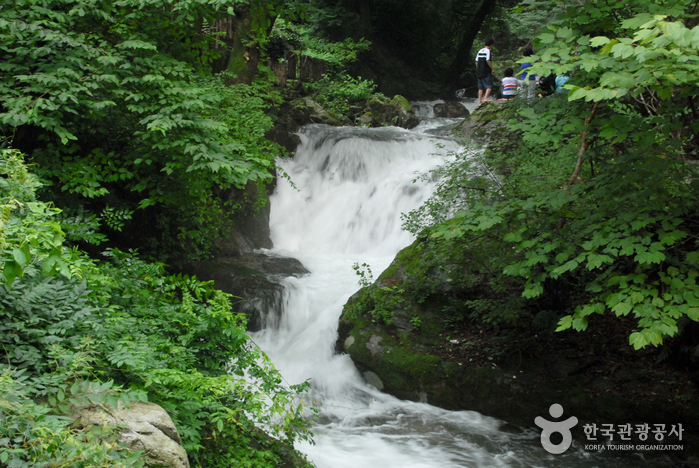

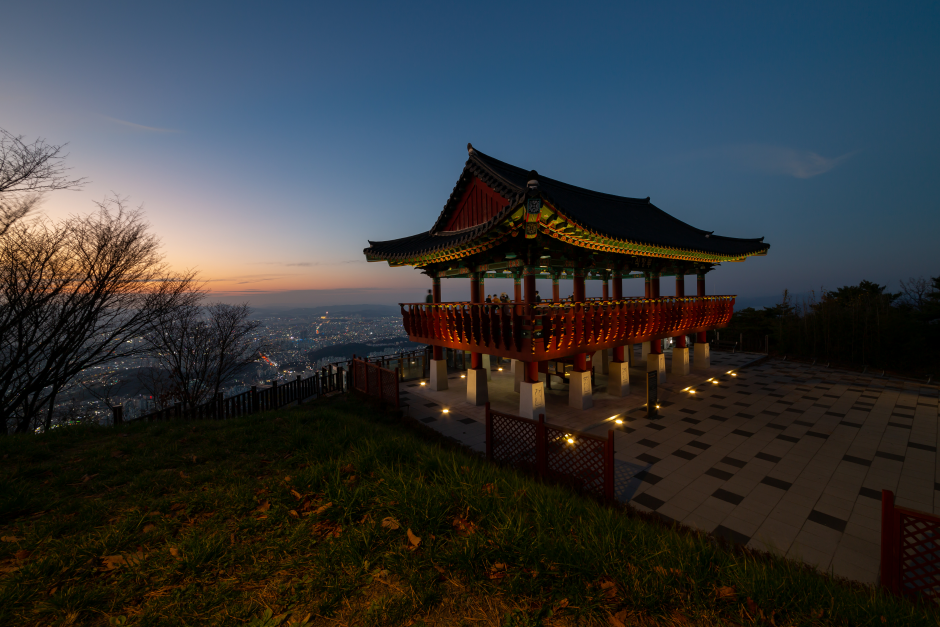
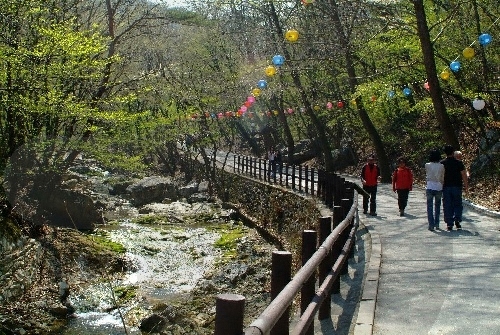
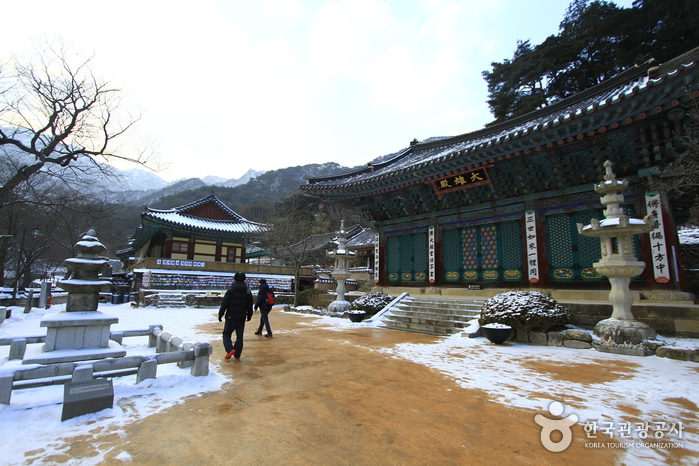
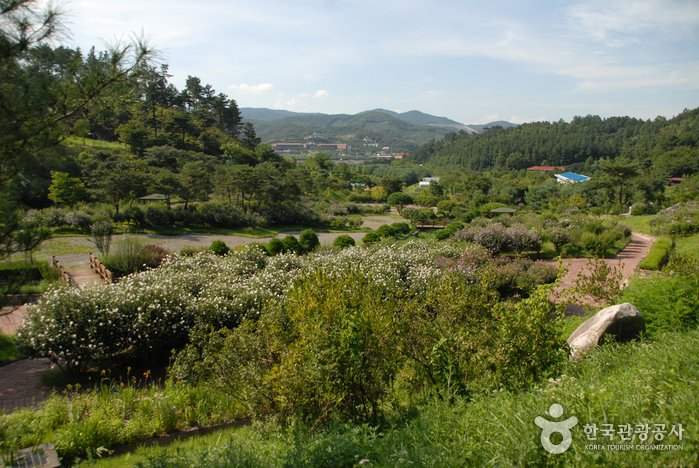
 English
English
 한국어
한국어 日本語
日本語 中文(简体)
中文(简体) Deutsch
Deutsch Français
Français Español
Español Русский
Русский